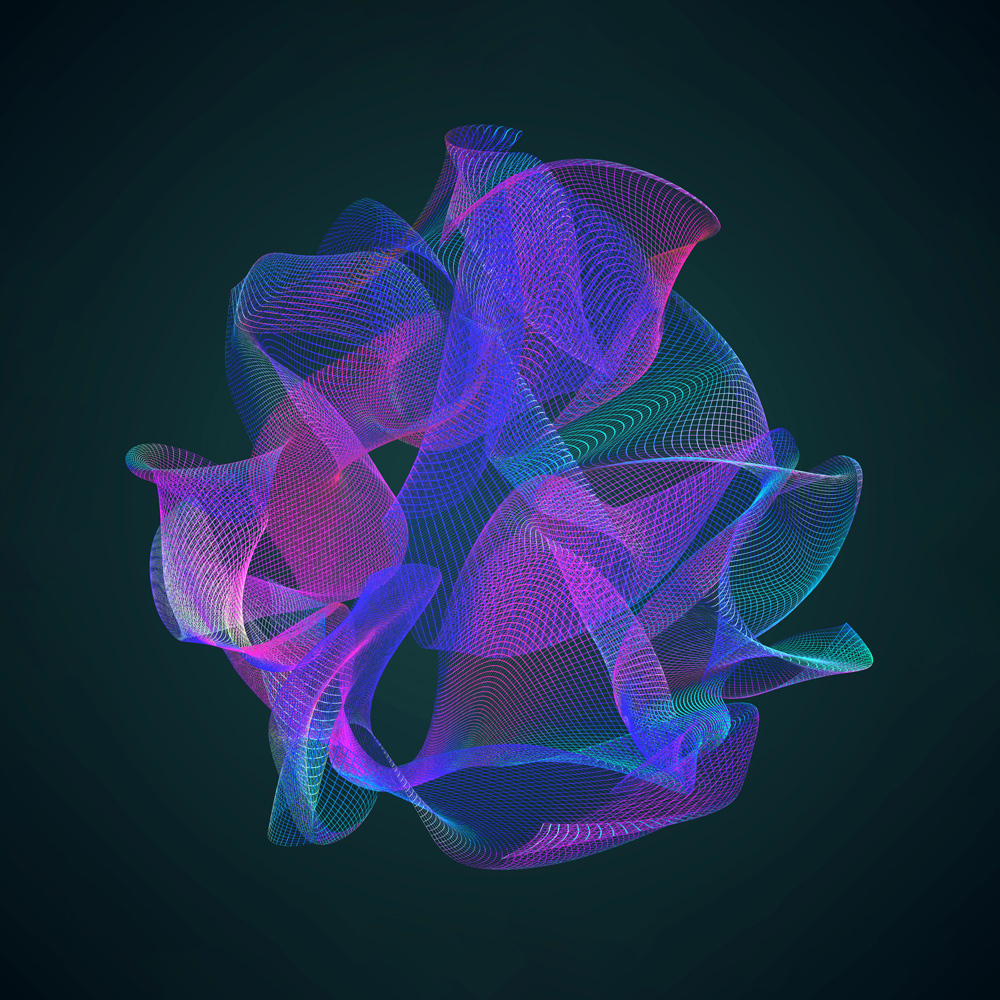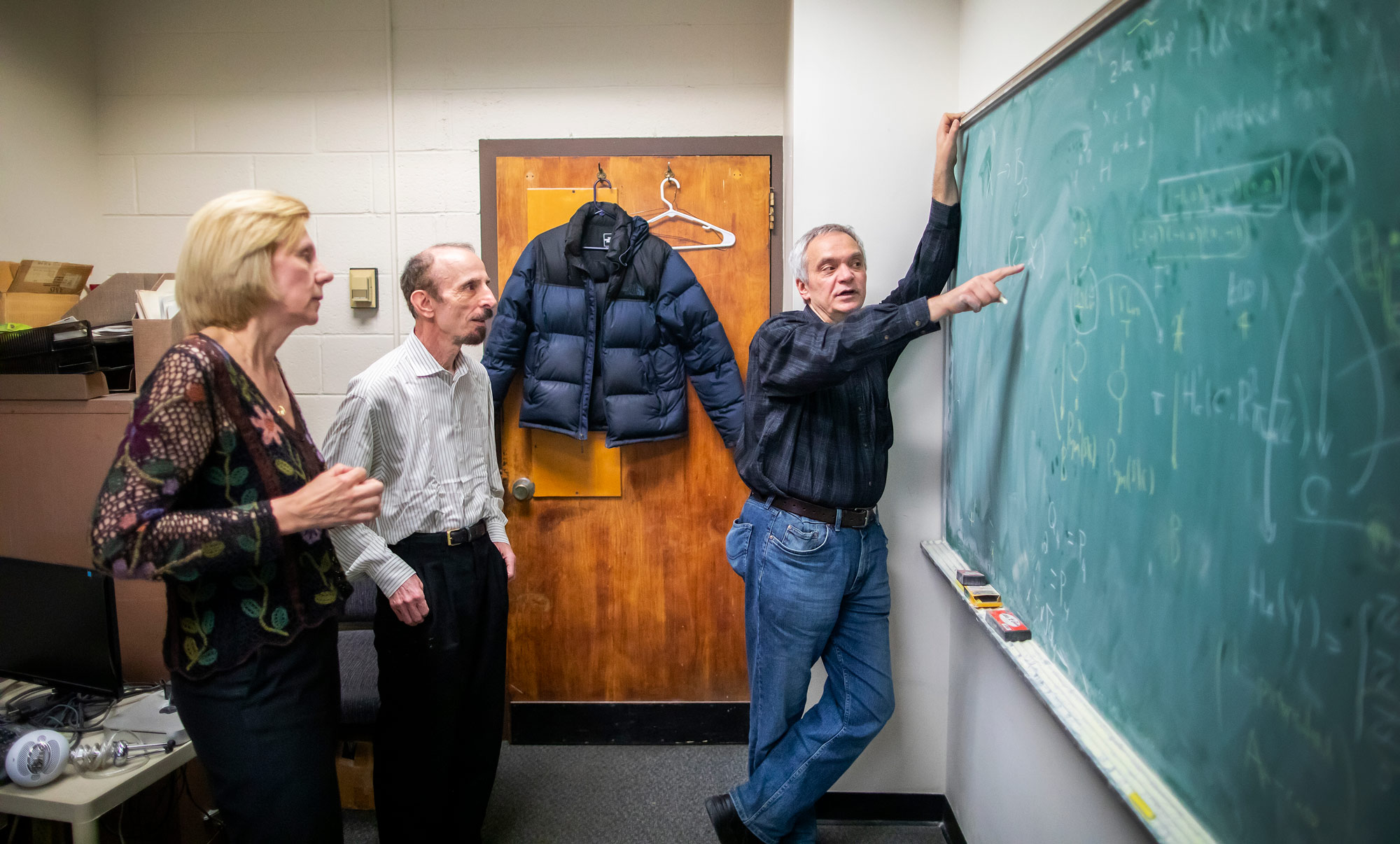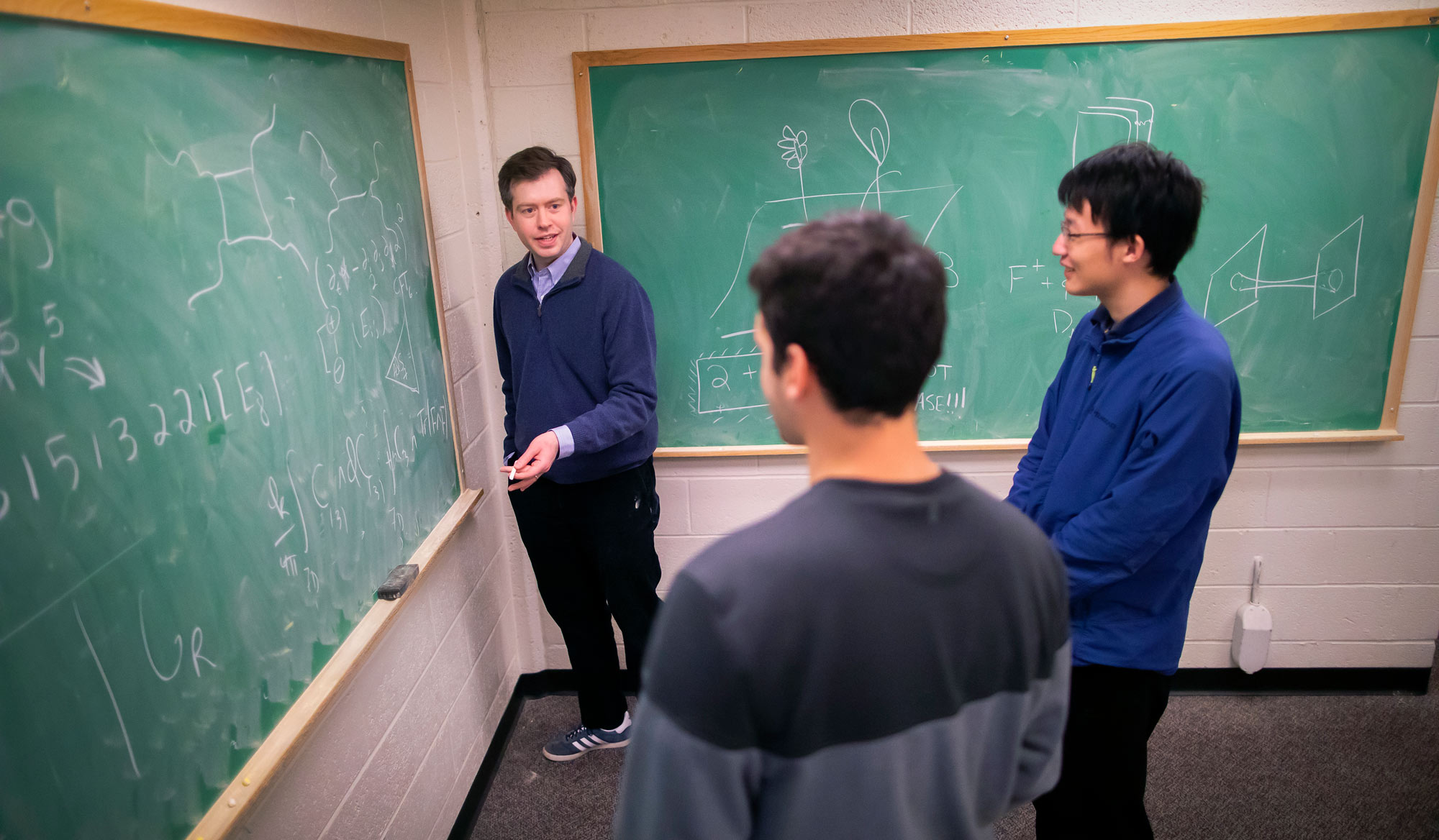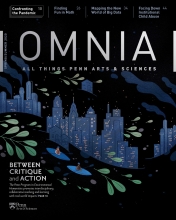Where Math Meets Physics
Collaborations between physicists and mathematicians showcase the importance of research that crosses the traditional boundaries that separate fields of science.
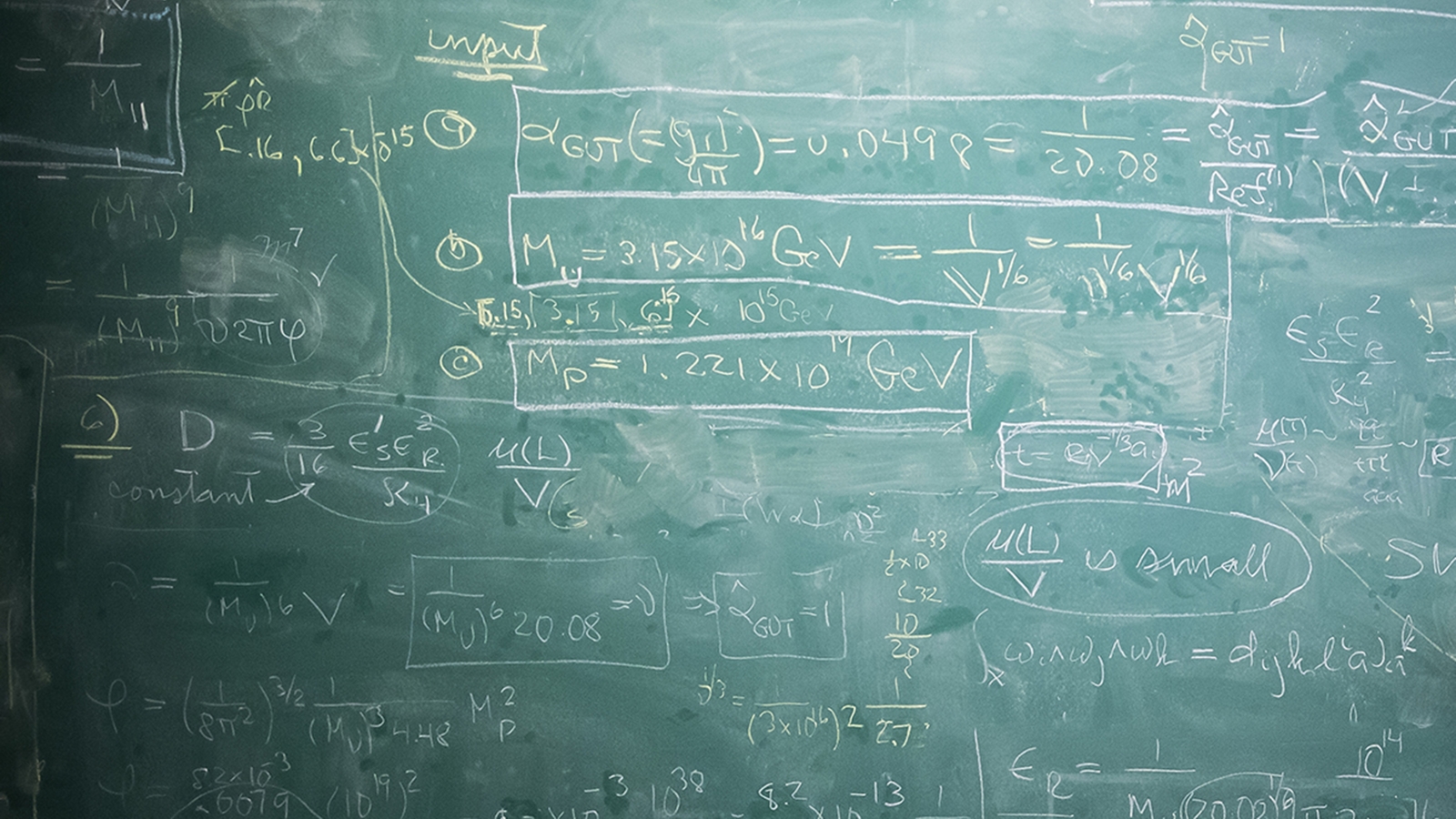
In the scientific community, “interdisciplinary” can feel like an overused, modern-day buzzword. But uniting different academic disciplines is far from a new concept. Math, chemistry, physics, and biology were grouped together for many years under the umbrella “natural philosophy,” and it was only as knowledge grew and specialization became necessary that these disciplines became more defined.
With many complex scientific questions still in need of answers, working across multiple fields is now seen as an essential part of research. Long-running collaborations between the math department and the physics and astronomy department showcase the importance of interdisciplinary research that crosses traditional boundaries. Advances in geometry, string theory, and particle physics, for example, have been made possible by teams of researchers who speak different “languages” and embrace new research cultures.
A Tale of Two Disciplines
Math and physics are two closely connected fields. For physicists, math is a tool used to answer questions. For example, Newton invented calculus to help describe motion. For mathematicians, physics can be a source of inspiration, with theoretical concepts such as general relativity and quantum theory providing an impetus for mathematicians to develop new tools.
But despite their close connections, physics and math research rely on distinct methods. As the systematic study of how matter behaves, physics encompasses the study of both the great and the small, from galaxies and planets to atoms and particles. Questions are addressed using combinations of theories, experiments, models, and observations to either support or refute new ideas about the nature of the universe.
In contrast, math is focused on abstract topics such as quantity (number theory), structure (algebra), and space (geometry). Mathematicians look for patterns and develop new ideas and theories using pure logic and mathematical reasoning. Instead of experiments or observations, mathematicians use proofs to support their ideas.
While physicists rely heavily on math for calculations in their work, they don’t work toward a fundamental understanding of abstract mathematical ideas in the way that mathematicians do. Physicists “want answers, and the way they get answers is by doing computations,” says Tony Pantev, Class of 1939 Professor of Mathematics. “But in mathematics, the computations are just a decoration on top of the cake. You have to understand everything completely, then you do a computation.”
Sometimes, physics papers are essentially, “We discovered this thing, isn’t that cool?” But math is never like that. Everything is about understanding things for the sake of understanding them. Culturally, it’s very different.
This fundamental difference leads researchers in both fields to use the analogy of language, highlighting a need to “translate” ideas in order to make progress and understand one another. “We are dealing with how to formulate physics questions so it can be seen as a mathematics problem” says Mirjam Cvetič, Fay R. and Eugene L. Langberg Professor of Physics. “That’s typically the hardest part.”
“A physicist comes to us, asks, ‘How do you prove that this is true?’ and we immediately show them it’s false,” says Ron Donagi, Professor of Mathematics. “But we keep talking, and the trick is not to do what they say to do but what they mean, a translation of the problem.”
In addition to differences in methodology and language, math and physics also have different research cultures. In physics, papers might involve dozens of co-authors and institutions, with researchers publishing work several times per year. In contrast, mathematicians might work on a single problem that takes years to complete with a small number of collaborators. “Sometimes, physics papers are essentially, ‘We discovered this thing, isn’t that cool?’” says Randy Kamien, Vicki and William Abrams Professor in the Natural Sciences. “But math is never like that. Everything is about understanding things for the sake of understanding them. Culturally, it’s very different.”
Mind the Gap
When asked how mathematicians and physicists can bridge these fundamental gaps and successfully work together, researchers refer to a commonly cited example that also has a connection to Penn. In the 1950s, Eugenio Calabi, now Thomas A. Scott Professor of Mathematics Emeritus, conjectured the existence of a six-dimensional manifold, a topological space arranged in a way that allows complex structures to be described and understood more simply. After the manifold’s existence was proven in 1978 by Shing-Tung Yau, currently the William Caspar Graustein Professor of Mathematics at Harvard University, this new finding was poised to become a fundamental component of a new idea in particle physics: string theory.
Proposed in the 1970s as a candidate framework for a “theory of everything,” string theory describes matter as being made of one-dimensional vibrating strings that form elementary particles, like electrons and neutrinos, as well as forces, like gravity and electromagnetism. The challenge, however, is that string theory requires a 10-dimensional universe, so physicists turned to Calabi-Yau manifolds as a place to house the “extra” dimensions.
Because the structure is so complex and only recently proven by mathematicians, it wasn’t simple to directly implement into a physics framework. Physicists “use differential geometry, but that’s been known for a long time,” says Burt Ovrut, Professor of Physics and Astronomy. “When all of a sudden string theory launches, who the heck knows what a Calabi-Yau manifold is?”
Through the combined efforts of Ed Witten, a theoretical physicist and professor of mathematical physics at the Institute for Advanced Study in Princeton, and the late Sir Michael Atiyah, a British-Lebanese mathematician specializing in geometry, researchers found a way to apply Calabi-Yau manifolds in string theory. It was the ability of Witten to help translate ideas between the two fields that many researchers say was instrumental in successfully applying brand-new ideas from mathematics into up-and-coming theories from physics.
Donagi, Pantev, and Antonella Grassi, Professor of Mathematics Emeritae, as well as physicists Cvetič, Kamien, Ovrut, and Jonathan Heckman, Assistant Professor of Physics and Astronomy, have also recognized the importance of speaking a common language as they work across the two fields. They credit Penn as being a place that’s particularly adept at fostering connections and bridging gaps in cultural, linguistic, and methodological differences, and they credit their success to time spent listening to new ideas and developing ways to “translate” between languages.
For Donagi, it was a chance encounter with Witten in the mid-1990s that led the mathematician to his first collaboration with a researcher outside of pure math. He enjoyed working with Witten so much that he reached out to Penn physicists Cvetič and Ovrut to start a “local” crossover collaboration. “I’ve been hooked since then, and I’ve been talking as much to physicists as to other mathematicians,” Donagi says.
During the mid-2000s, Donagi and Ovrut co-led an interedisciplinary research group supported by the National Science Foundation and the Department of Energy with Pantev and Grassi that was supported by the U.S. Department of Energy. The collaboration marked a successful first official math and physics crossover collaboration at Penn. As Ovrut explains, the work was focused on a specific kind of string theory and required extremely close interactions between physics and math researchers. “It was at the very edge of mathematics and algebraic geometry, so I couldn’t do this myself, and the mathematicians were very interested in these things,” says Ovrut.
Cvetič, a longtime collaborator with Donagi and Grassi, says that Penn’s mathematicians have the expertise they need to help answer important questions in physics and that their collaborations at the interface of string theory and algebraic geometry are “extremely fruitful and productive.”
“I think it’s been incredibly productive and helpful for both our groups,” Donagi says. “We’ve been doing this for longer than anyone else, and we have a really good, strong connection between the groups. They’ve almost become one group.”
And in terms of embracing cultural differences, physicists like Kamien, who works on problems with a strong connection to geometry and topology, encourages his group members to try to understand math the way mathematicians do instead of only seeing it as a tool for their work. “We’ve tried to absorb not just their language but their culture, how they understand things, how sometimes understanding a problem more deeply is better,” he says.
Crossing Paths
Craig Lawrie and Ling Lin, current and former postdocs working with Cvetič and Heckman, know firsthand about both the challenges and opportunities of working on a problem that combines cutting-edge math and physics. Physicists like Lawrie and Lin, who work on problems in two different branches of string theory, are trying to figure out what types of particles different geometric structures can create while also removing the “extra” six dimensions.
Adding extra symmetries, a physical or mathematical feature that remains constant when undergoing a transformation (think of a ball rotating in front of a mirror), makes string theory problems easier to work with and allows researchers to ask questions about the properties of geometric structures and how they correspond to real-world physics. Building off previous work by Heckman, Lawrie, and Lin were able to extract physical features from known geometries in five-dimensional systems to see if those particles overlapped with standard model particles. Using their knowledge of both physics and math, the researchers showed that geometries in different dimensions are all related mathematically, which means they can study particles in different dimensions more easily.
By combining their physics intuition with their knowledge of math, Lawrie and Lin were able to make new discoveries that wouldn’t have been possible if approaches from the two fields were used in isolation. “What we found seems to suggest that theories in five dimensions come from theories in six dimensions,” explains Lin. “That is something that mathematicians, if they didn’t know about string theory or physics, would not think about.”
Lawrie adds that being able to work directly with mathematicians is also helpful in their field since understanding new math research can be a challenge, even for theoretical physics researchers. “As physicists, we can have a long discussion where we use a lot of intuition, but if you talk to a mathematician they will say, ‘Wait, precisely what do you mean by that?’ and then you have to pull out your important assumptions,” says Lawrie. “It’s also good for clarifying our own thought process.”
Rodrigo Barbosa, GR’19, also knows what it’s like to work across fields, in his case coming from math to physics. While studying a seven-dimensional manifold as part of his Ph.D. program, Barbosa connected at a conference with Lawrie over their shared research interests. The two researchers were then able to combine their experiences through a successful interdisciplinary collaboration. The work was motivated by Barbosa’s Ph.D. research in math that included both junior and senior faculty, as well as postdocs and graduate students, from physics.
While Barbosa says that the work was challenging, especially being the only mathematician in the group, he also found it rewarding. He enjoyed being able to provide mathematical explanations for certain difficult concepts and relished the rare opportunity to work so closely with researchers outside of his field while still in graduate school. “I’m very grateful that I did my Ph.D. at Penn because it’s really one of a handful of places where this could have happened,” he says.
The Next Generation
Faculty in both departments see the next generation of students and postdocs as “ambidextrous,” having fundamental skills, knowledge, and intuition from both math and physics. “Young people are extremely sophisticated and open-minded,” says Pantev. “In the old days, it was very hard to get into physics-related research if you were a mathematician because the thinking is completely different. Now, young people are equally versed in both modes of thinking, so it’s easy for them to make progress.”
Heckman is also a member of this new ambidextrous generation of researchers, and in his two years at Penn he has co-authored several papers and started new projects with mathematicians. He says that researchers who want to be successful in the future need to be able to balance the needs of both fields. “Some students act more like mathematicians, and I have to guide them to act more like physicists, and others have more physical intuition but they have to pick up the math,” he says.
In the old days, it was very hard to get into physics-related research if you were a mathematician because the thinking is completely different. Now, young people are equally versed in both modes of thinking.
It’s a balance that requires a blend of flexibility and precision, and is one that will be a continuing challenge as topics become increasingly complex and new observations are made from physics experiments. “Mathematicians want to make everything well-defined and rigorous. From a physics perspective, sometimes you want to get an answer that doesn’t need to be well-defined, so you need to make a compromise,” says Lin.
This compromise is something that’s attracted Barbosa to working more with physicists, adding that the two fields are complementary. “Problems have become so difficult that you need input from all possible directions. Physics works by finding examples and describing solutions, while in math you try to see how general these equations are and how things fit together,” Barbosa says. He also enjoys that physics provides him with a way to make progress on answering questions more quickly than in pure math, where problems can take years to solve.
The Future of Crossing Over
The future of interdisciplinary research will depend a lot on the next generation, but Penn is well positioned to continue leading these efforts thanks to the proximity of the two departments, shared grants, cross-listed courses, and students and postdocs that actively work on problems across fields. “There is this constant osmosis of basic knowledge that builds up students who are literate and comfortable with sophisticated language,” says Pantev. “I think we are ahead of the curve, and I think we’ll stay ahead of the curve.”


